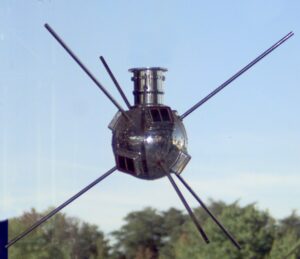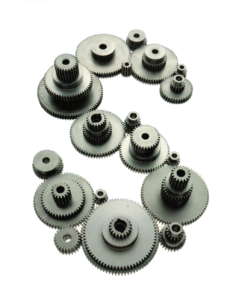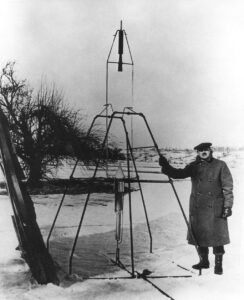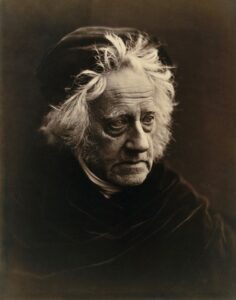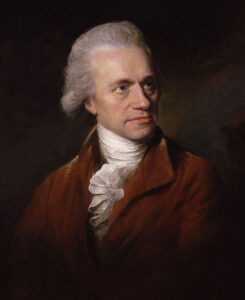Archive for 2024
Vanguard 1 Launched
The American satellite Vanguard 1 is launched. About the size of a grapefruit, Vanguard 1 was the 2nd American satellite launched and 4th man-made object in Earth orbit, following Sputnik 1, Sputnik 2, and Explorer 1. It was the first satellite to have solar power, highest object launched at the time, and currently holds the record for the oldest man-made object still in orbit. Vanguard 1 is expected to stay in orbit until the late 22nd century.
Mac OS X Server 1.0 Released
Mac OS X Server 1.0 is released. This was the first version of Mac OS X available as the desktop version would not be released until just over a year later on March 24, 2001.
Derived from the NeXTSTEP technology that Apple acquired in its purchase of Steve Jobs’ company NeXT (which also brought back Jobs as an advisor and eventually CEO) Mac OS X Server 1.0 is important in history as the first shipping example of what would become the Mac OS X operating system (later OS X and then macOS), which was not only a major advancement for the Apple Macintosh platform but would also form the basis of Apple’s future iOS and iPadOS operating system. However, this original 1.0 release was fairly rough around the edges and was met with mixed reviews due to various technical limitations and interface oddities due to the not yet completed transition from the NeXTSTEP interface model.
The First Wiki
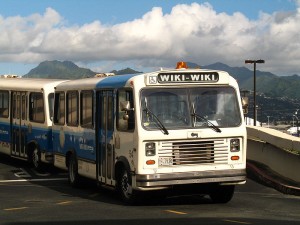
The worlds first Wiki, WikiWikiWeb is gets its start as Ward Cunningham sends an e-mail inviting people to add and edit content. Cunningham officially launches WikiWikiWeb 9 days later on March 25th.
A Wiki is a database that can be a community collaboration. Rather than calling his creation “quick-web”, Cunningham said the inspiration for the name Wiki came from the Wiki Wiki shuttle bus he learned of during a trip to Hawaii, “wiki wiki” meaning “quick” or “fast” in the Hawaiian language. Six years later, Wikipedia is launched, although Cunningham has no official involvement.
First Liquid-Fueled Rocket Launched
Robert Goddard, now considered the father of modern rocketry, successfully launched the world’s first liquid-fueled rocket in Auburn, Massachusetts. The rocket reached an altitude of 41 feet in 2 seconds at a speed of about 60 miles per hour.
The concept of using liquid as fuel allowed the advancement of rocket technology to the point where space travel was made possible. Goddard died in 1945 before his vision of space travel became a reality, however NASA acknowledged his contributions by naming the Goddard Space Flight Center after him.
First Internet Domain Registered
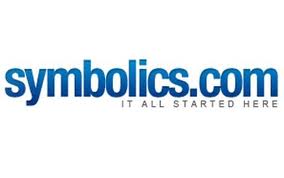
The first Internet domain symbolics.com is registered by Symbolics, a Massachusetts computer company.
First Newsletter of the Homebrew Computer Club
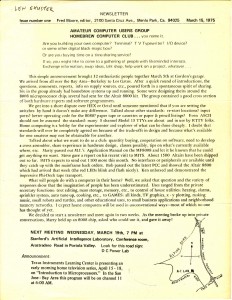
Issue number one of the Homebrew Computer Club’s newsletter is published. Only 21 issues are published through December 1977, but the newsletter is considered influential in the early culture of the personal computer industry.
Bell Labs Announces TRADIC
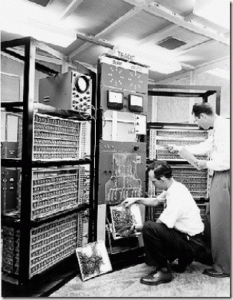
AT&T Bell Laboratories announces the completion of the first fully transistorized computer, TRADIC. TRADIC, which stood for TRAnsistor DIgital Computer, contained nearly 800 transistors, which replaced the standard vacuum tube and allowed the machine to operate on fewer than 100 watts which was one-twentieth the power required by a comparable vacuum tube computer.
First Use of Word “Photography”
Almost exactly 58 years to the day that his father William discovered the planet Uranus, John Herschel presented to the Royal Society his “Note on the Art of Photography, or the application of the Chemical Rays of Light to the purposes of Pictorial Representation.” This is considered the first recorded use of the word “photography”.
John Herschel was a famous English scientist and polymath, doing work as a mathematician, astronomer, chemist, inventor, and experimental photographer. He was also the inventor of the blueprint among his many accomplishments.
Microsoft Goes Public
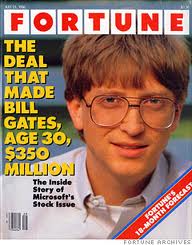
Ten years after the company’s founding, Microsoft Corporation stock goes public at $21 per share. The stock, which eventually closed at $27.75 a share, peaked at $29.25 a share shortly after the opening. It is said that the rising value of Microsoft stock has made an estimated 4 billionaires and 12,000 millionaires of Microsoft employees.
A Comet? No, that’s Uranus!
Using a telescope, English astronomer William Herschel notices a small object that would move slowly across the sky over the next several days. At first thinking he had discovered a comet, continued observation revealed a planet, soon named Uranus after the Greek god of the sky. This event was also notable as it was the first time a planet was discovered by telescope.
The discovery of the planet led to Herschel’s appointment as royal court astronomer by King George III which allowed him to further pursue astronomy. Over 20 years Herschel would observe and catalog 2,500 new nebulae and star clusters as well as two moons around Uranus and two more around Saturn. He also proposed the name “asteroids” for the objects discovered in 1801.

